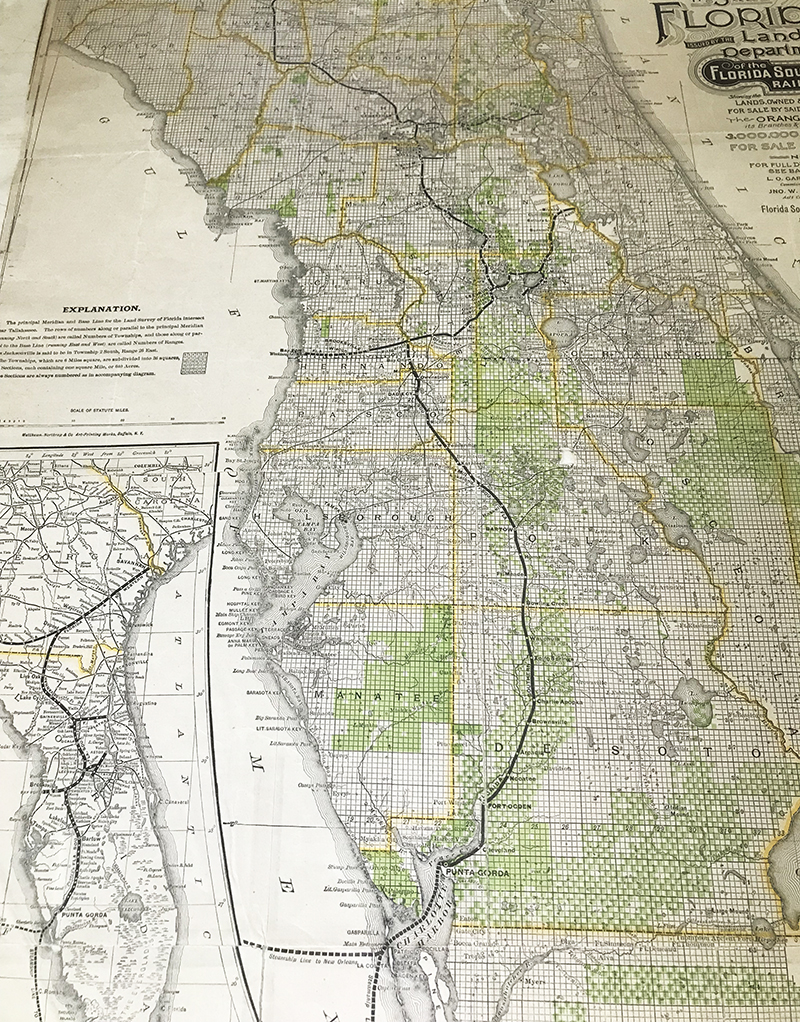
This is what big dreaming looked like in 1888 Florida - the proposed route of a rail line through the heart of the state, linking productive citrus groves and farm lands with the distant markets of North and South America. It is all right there on this big map (so big it is hard to get a snapshot of the whole thing) now housed in the Library of Florida History.
The title, almost as long as the right- of- way, says it all.
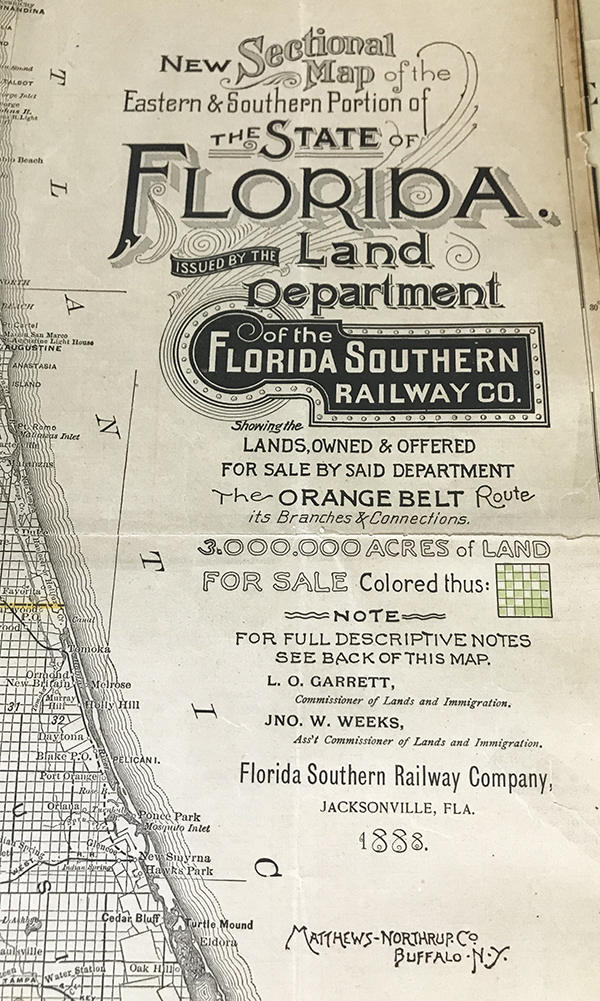
This big idea started in 1879 as the Gainesville, Ocala and Charlotte Harbor Railroad, and for a couple of years it was the largest narrow-gauge line in Florida. It was rebranded in 1881 to become the Florida Southern Railway Company.
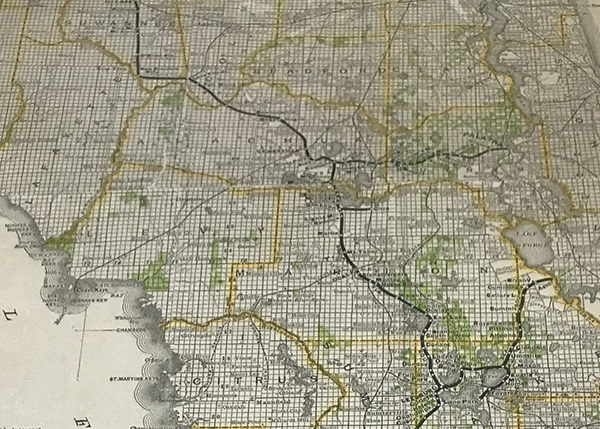
It began off there in the north central part of the state, connecting various towns and shipping routes along the St. John’s River at Palatka westward toward Gainesville and Ocala and then south with an ultimate destination by Punta Gorda.
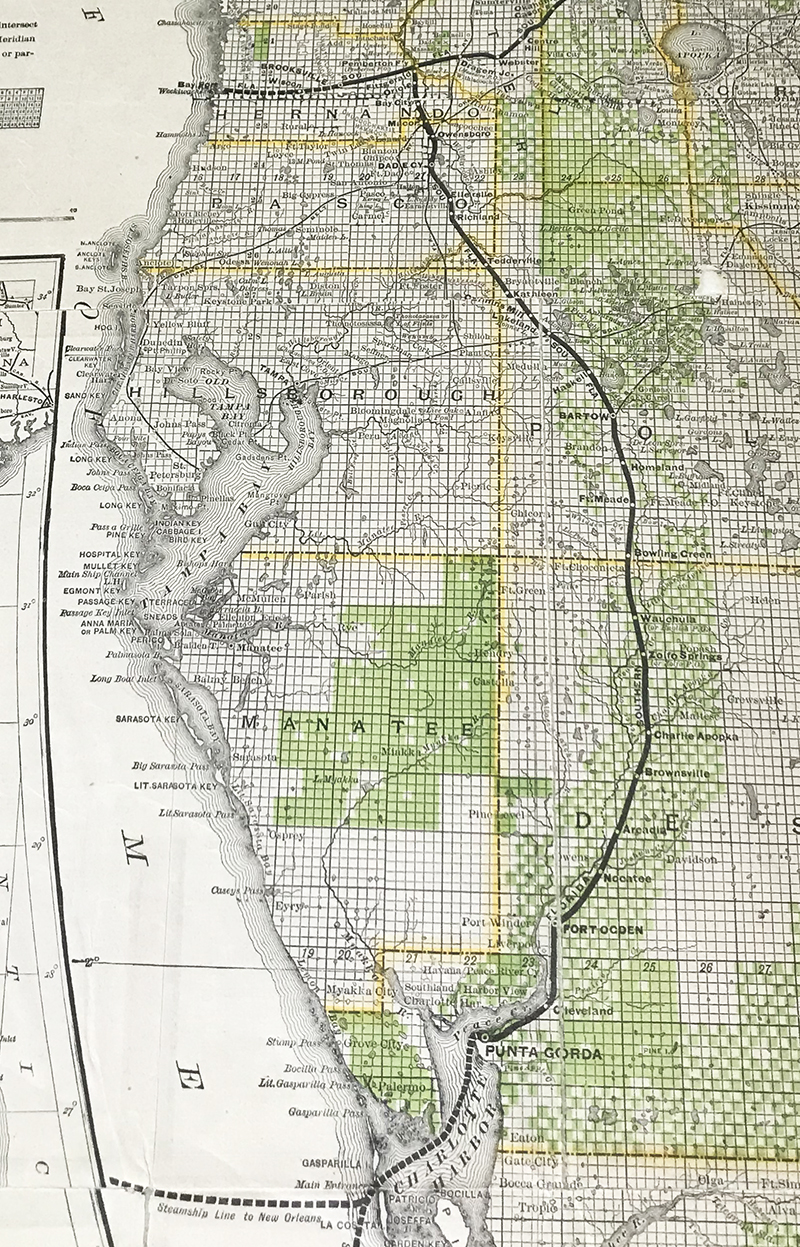
If some of the routes seem familiar that is likely because parts of them reflect the paths of I-75 and I-4 today. There are, after all, only so many ways to connect parts of a long, narrow peninsula.
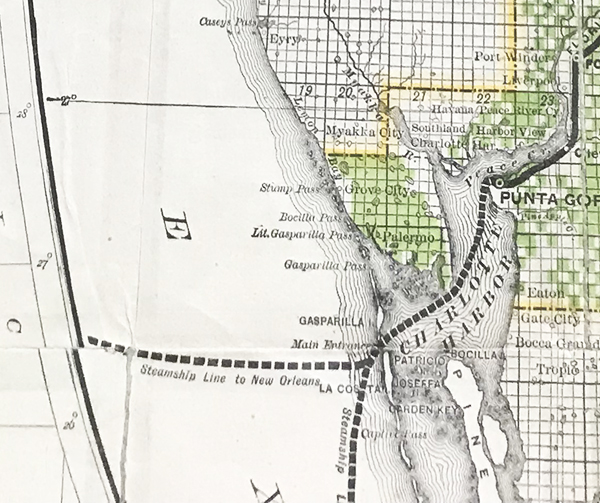
The real goal at the southern end was Charlotte Harbor and its connections to distant ports. You will note in passing the rail lines ignored the remote, primitive part of the state known as Tampa Bay. A fellow named Henry Plant would fix that.
Now, why all those black boxes on the map?
If you happen to follow Florida Frontiers Radio and the Web Extras, you might remember in episode 379 we talked about plat maps ( https://myfloridahistory.org/webextras/webextras/81 ) and the grid that covers much of the United States forming the basis of legal descriptions for property. Part of the title of this map is “Sectional” and those boxes are Sections of that grid system. Half of this dream was getting goods to market, the other half was selling land to people who would raise crops and make products to send to market. The front of the map is the railway route, and the land (green and white) the company had ready to sell.
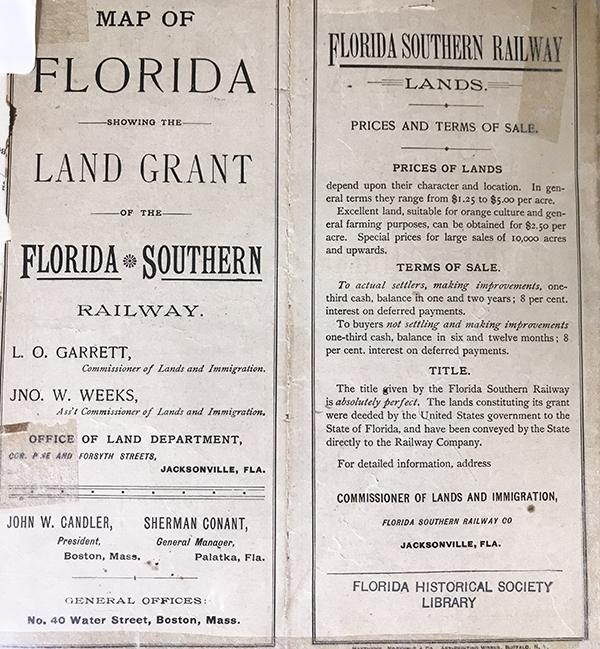
The back is the rest of the story, the marketing of the dream to would-be investors, speculators, farmers sick of northern winters, anyone who wanted their own slice of a tropical paradise.
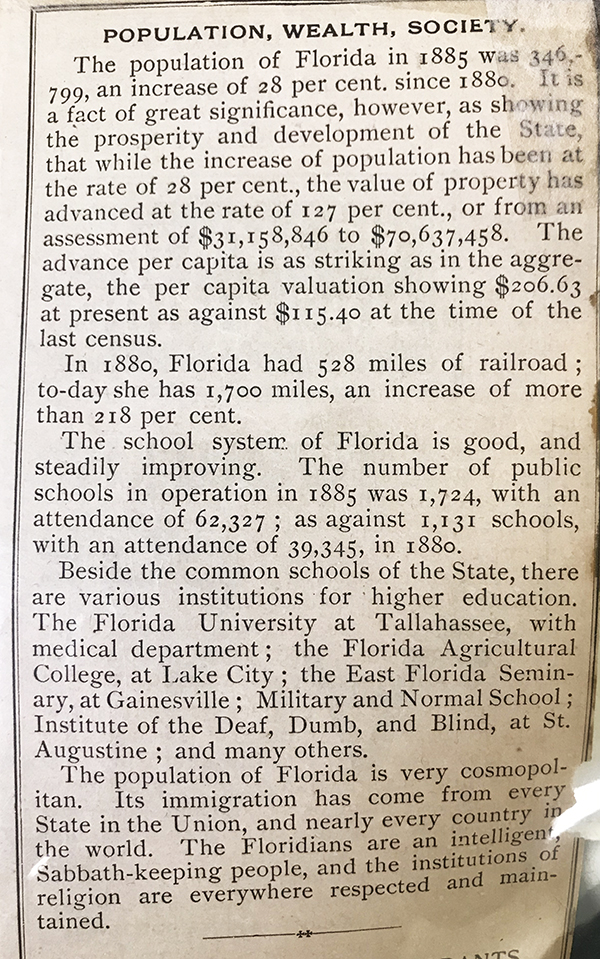
As with any aggressive, make that very aggressive, marketing plan, it could make what was basically a steamy, mosquito infested wilderness sound irresistible.
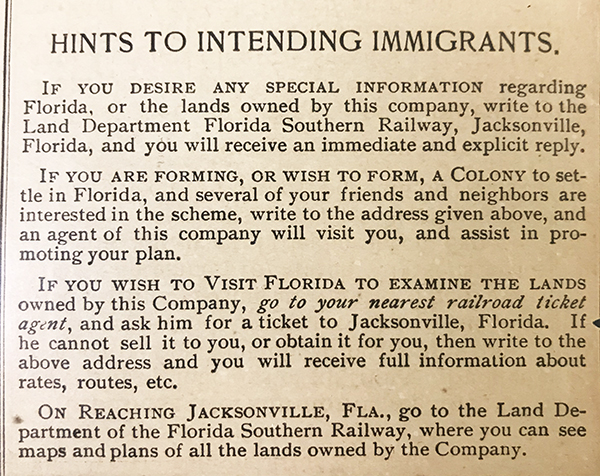
It came complete with the 1888 version of ‘act now’ or ‘send me your account number’.
So, how did it go for this so-called “Orange Line?”
In 1890 the Florida Southern Railway Company went into receivership. That fellow Henry Plant bought it up, changed the name to Florida Southern Railroad in 1892 and worked parts of the right of way into the single rail line he was building to connect most of the western portion of Florida.
Things went well until the 1895 freeze destroyed most of the citrus crop, not a good thing for an enterprise called ‘The Orange Line’.
By the 1900s the tracks were part of the Seaboard Air Line Railroad, which operated until the 1960s. A lot has changed for railroads, names have come and gone. The Florida Southern Railway is not a name that comes up often. But be assured, some of the right-of-ways shown on this map are in use today.







